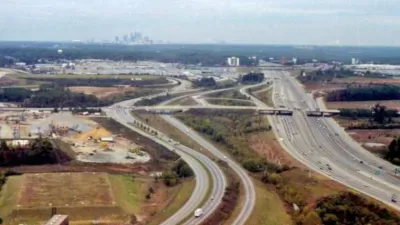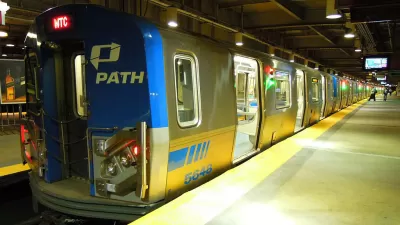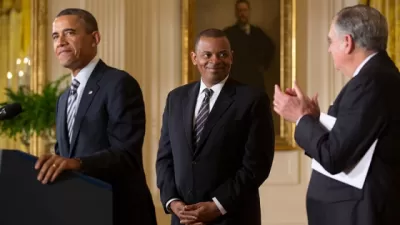A new study by the U.S. Dept. of Transportation projects mobility patterns of 2045. With projected growth of 70 million people, the pressure is on to invest in infrastructure and bring transportation planning into the 21st century.

Transportation Secretary Anthony Foxx painted a grim picture of potential nationwide gridlock 30 years from now if the nation does not change its approach to transportation planning and transportation funding. He presented a new DOT study, titled "Beyond Traffic," that tries to project how an added 70 million Americans will impact mobility patterns, admit projected changes in urban living patterns, technology, and lifestyles. The study assumes that, despite the growth in urban populations, the country will still remain largely suburban and will, therefore, require investment in roads and other types of infrastructure that serves private autos.
Other notable projections include the following:
- Cities will grow larger but become less dense overall
- Government regulation will have to adapt to accommodate, and promote, the use of new technologies
- The rate of growth in average vehicle miles traveled will not reverse, but it will slow down
- Roads must be upgraded to accommodate multiple modes of transportation
“'The potential is there to make a transportation system as amazing, frankly, as the stark scenario above is troubling — a system that is safer, more efficient, more sustainable, and more satisfying — one that successfully connects all Americans to the 21st century economy,'” the report says.
FULL STORY: Transportation Department report gives the outlook for the next 30 years

Planetizen Federal Action Tracker
A weekly monitor of how Trump’s orders and actions are impacting planners and planning in America.

San Francisco's School District Spent $105M To Build Affordable Housing for Teachers — And That's Just the Beginning
SFUSD joins a growing list of school districts using their land holdings to address housing affordability challenges faced by their own employees.

The Tiny, Adorable $7,000 Car Turning Japan Onto EVs
The single seat Mibot charges from a regular plug as quickly as an iPad, and is about half the price of an average EV.

Trump Approves Futuristic Automated Texas-Mexico Cargo Corridor
The project could remove tens of thousands of commercial trucks from roadways.

Austin's First Single Stair Apartment Building is Officially Underway
Eliminating the requirement for two staircases in multi-story residential buildings lets developers use smaller lots and more flexible designs to create denser housing.

Atlanta Bus System Redesign Will Nearly Triple Access
MARTA's Next Gen Bus Network will retool over 100 bus routes, expand frequent service.
Urban Design for Planners 1: Software Tools
This six-course series explores essential urban design concepts using open source software and equips planners with the tools they need to participate fully in the urban design process.
Planning for Universal Design
Learn the tools for implementing Universal Design in planning regulations.
Smith Gee Studio
City of Charlotte
City of Camden Redevelopment Agency
City of Astoria
Transportation Research & Education Center (TREC) at Portland State University
US High Speed Rail Association
City of Camden Redevelopment Agency
Municipality of Princeton (NJ)




























